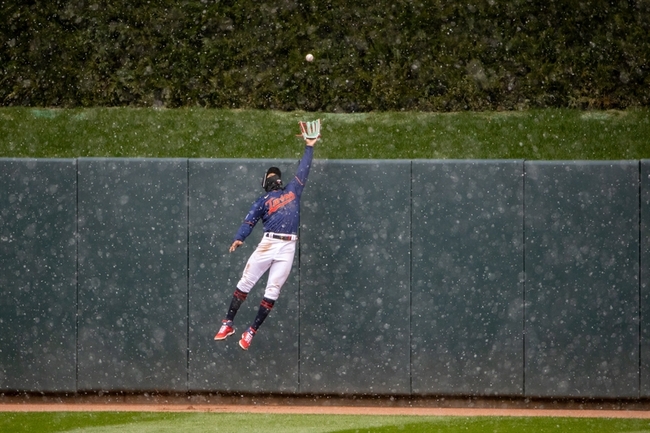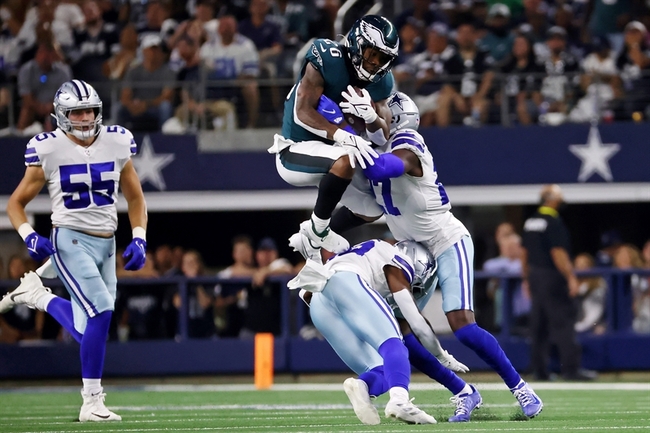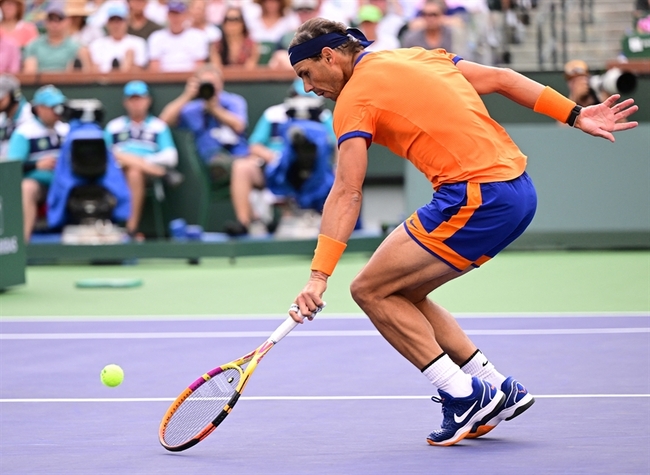You are viewing 1 of your 1 free articles
Demands of Sport: Part VI – mapping direction change
Change of direction is vital for athletic performance. However, the high injury risk requires athletes to have the appropriate technical and physical capacities. Helen Bayne discusses the demands of direction changes in sports and identifies key movement patterns for practitioners to address during lower limb injury prevention and rehabilitation.

Atlanta Falcons wide receiver Drake London runs during drills during Falcons Rookie Minicamp at the Falcons Training Complex. Mandatory Credit: Dale Zanine-USA TODAY Sports
Multidirectional sports require frequent changes of direction (COD) while running. To redirect the center of mass, athletes must initially decelerate, reorientate the body, and then accelerate in a new direction(1). Acceleration requires an anteriorly directed (propulsive) ground reaction force (GRF), while deceleration requires a posteriorly directed (braking) GRF. Athletes achieve deceleration by positioning the center of mass behind the ground contact point. Conversely, they accelerate by placing the center of mass in front of the ground contact point (see figure 1). While effecting this transition from deceleration to acceleration, athletes use a variety of preparatory and executory movement patterns to alter their running direction.
Figure 1: Ground contact point during acceleration and deceleration
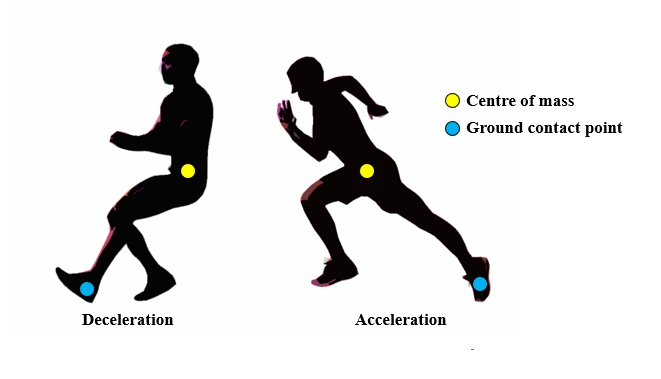
Directional changes occur on a continuum from curvilinear sprinting, which occurs at high speed with lower deceleration demand, to 180° pivots, where athletes come to a complete stop before accelerating in the opposite direction(2). Sidestepping, which lies on this continuum from approximately 30° to 90°, accounts for a large proportion of non-contact anterior cruciate ligament (ACL) injuries. External knee joint moments in the frontal and transverse planes are substantially greater during sidestepping than in straight-line running(3). Increased ACL strain is associated with large abduction and internal rotation moments when the knee is relatively extended. This strain can lead to ligament rupture if it exceeds the tissue’s capacity to withstand the load(4). Therefore, practitioners should promote movement strategies that reduce these loads to decrease the risk of injury.
Sidestep technique and knee joint loads
Increased knee abduction moments are associated with several features of sidestepping technique. For example, lateral flexion of the trunk away from the intended direction of travel shifts the athlete’s center of mass laterally. As a result, it generates a larger moment arm of the GRF about the knee in the frontal plane(5,6). Similarly, a wide foot placement results in the point of force application on the ground moving laterally away from the center of mass, and the GRF vector produces a larger knee abduction moment (see figure 2)(5,6). Therefore, practitioners recommend an upright trunk or slight lean towards the direction of travel and narrower foot placement to reduce knee joint loads.
Figure 2: Sidestep technique factors associated with increased knee abduction moments
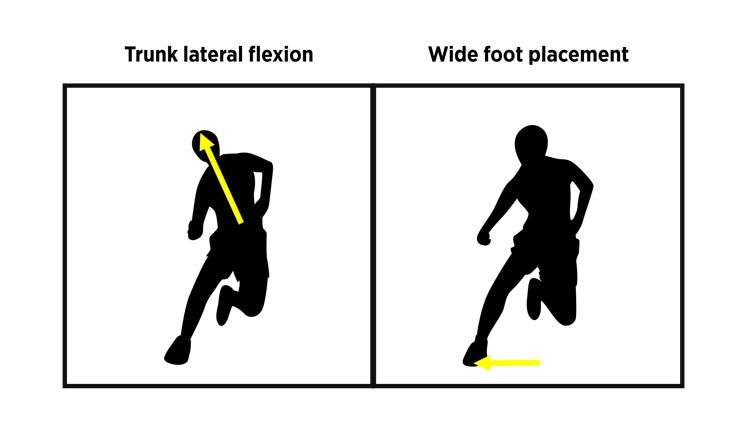
Dynamic knee valgus combines knee abduction, hip adduction, and hip internal rotation and is characteristic of non-contact ACL injury (see figure 3)(4). This is due to the alignment of the lower limb segments contributing to increased abduction and internal rotation moments at the knee. In addition, a knee that is more extended at contact and demonstrates less flexion during early stance is prone to higher joint loads(7).
Figure 3: Dynamic Knee Valgus
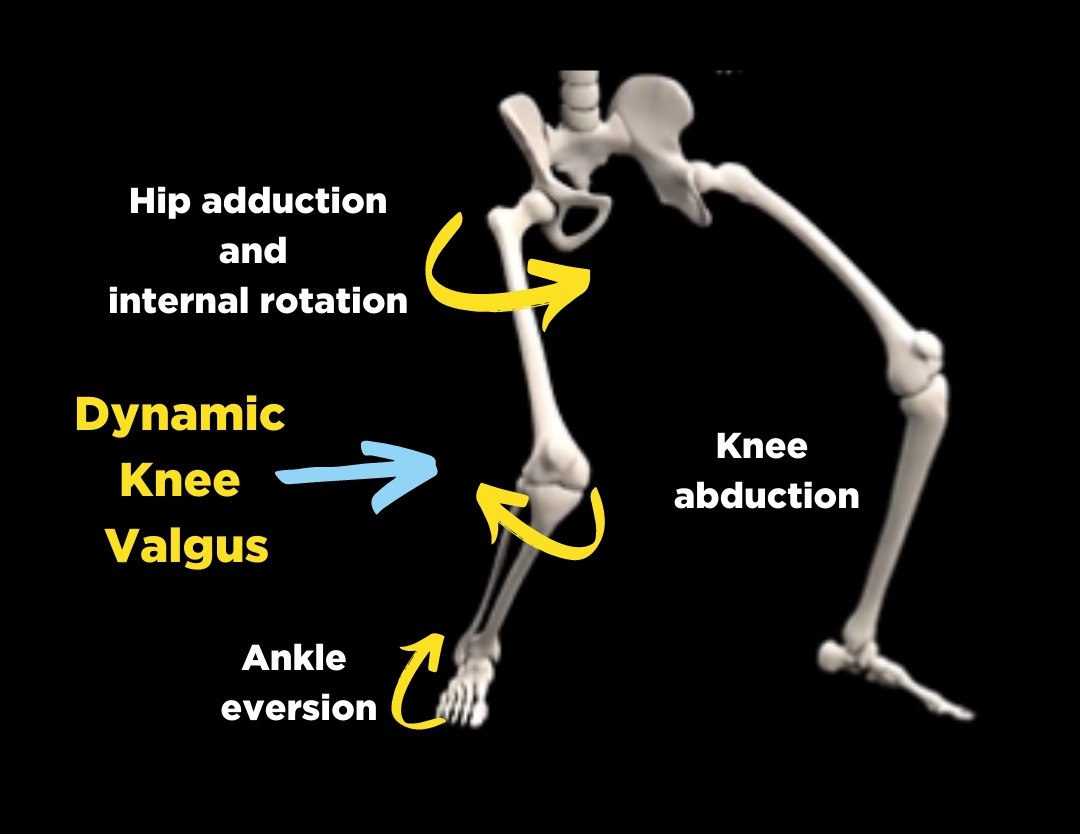
The foot’s orientation may also have a role to play in mitigating knee joint loads. Inward rotation of the foot towards the new direction of travel is associated with greater knee abduction moments(5,7). This is likely due to the rotated foot leading the knee into medial deviation because of the rotation of the tibia. Therefore, a neutral position better supports lower limb alignment. Lastly, contacting the ground with either the forefoot or rearfoot influences knee joint loads by altering GRFs and distributing joint work between the knee and ankle(8). A rearfoot strike pattern is associated with a greater load at the knee; therefore, forefoot contact may reduce the injury risk (see figure 4).
Figure 4: Lower limb positions that increase knee joint loads
 Practitioners should note the impact on task performance when considering technique modifications to decrease the risk of injury, as desirable changes for one goal may have a detrimental effect on the other. The majority of the factors described are beneficial for reducing knee loads and enhancing COD performance(4). However, in certain situations, wider foot placement and reduced knee joint flexion may enable a faster COD(4).
Practitioners should note the impact on task performance when considering technique modifications to decrease the risk of injury, as desirable changes for one goal may have a detrimental effect on the other. The majority of the factors described are beneficial for reducing knee loads and enhancing COD performance(4). However, in certain situations, wider foot placement and reduced knee joint flexion may enable a faster COD(4).
Preparatory steps
When a non-contact ACL rupture occurs during a sidestep, it typically happens within 60ms after contact during the final COD step. Therefore, the research focus is predominantly on the knee joint loads and movements occurring during this phase. However, the steps leading up to the COD step are vital for injury risk mitigation and overall task execution, as the majority of deceleration occurs before the final contact(9). The faster the approach velocity and the sharper the COD angle, the greater the deceleration demand. Athletes meet this by increasing the deceleration distance or the horizontal braking forces.
During the penultimate step (preceding the COD step), athletes lower their center of mass by flexing the hip and knee joints while producing larger horizontal braking forces than those experienced during the COD step(9). This may enable athletes to execute good quality sidestepping techniques and minimize knee joint loads while changing direction if done effectively.
Integration of technical and physical demands
Deceleration ability is underpinned by eccentric strength capacity, especially at the knee joint, while the ankle plantarflexors and hip extensors are major contributors to acceleration performance. Reactive strength is needed across a range of ground contact durations, as these vary based on the COD angle and differ between the penultimate and COD steps. In addition to these physical qualities associated with linear running, COD necessitates multiplanar muscle function and control. In particular, the strength of the hip abductors and external rotators, and muscles that control trunk motion are essential. Development of these physical attributes can support technical interventions to address good movement quality.
The COD demands in multidirectional sports are great. Effective COD requires proficient execution of a complex movement task and dissipation and development of high external and internal forces. Therefore, practitioners need to develop comprehensive strategies to prepare athletes for their sport’s physical and technical demands.
References
- Hum Mov Sci. 2018; 62:202-210
- Strength Cond J. 2022; 44:15-33
- Med Sci Sports Exerc. 2011; 33:1169-1175
- Sports Med. 2018; 48:1799-1807
- Am J Sports Med. 2009; 37:2194-2200
- Hum Mov Sci. 2015; 42:203-211
- Phys Ther Sport. 2019; 38:152-161
- J Sci Med Sport. 2017; 20:33-37
- Strength Cond J. 2019; 41:87-104
Further reading
Newsletter Sign Up
Subscriber Testimonials
Dr. Alexandra Fandetti-Robin, Back & Body Chiropractic
Elspeth Cowell MSCh DpodM SRCh HCPC reg
William Hunter, Nuffield Health
Newsletter Sign Up
Coaches Testimonials
Dr. Alexandra Fandetti-Robin, Back & Body Chiropractic
Elspeth Cowell MSCh DpodM SRCh HCPC reg
William Hunter, Nuffield Health
Be at the leading edge of sports injury management
Our international team of qualified experts (see above) spend hours poring over scores of technical journals and medical papers that even the most interested professionals don't have time to read.
For 17 years, we've helped hard-working physiotherapists and sports professionals like you, overwhelmed by the vast amount of new research, bring science to their treatment. Sports Injury Bulletin is the ideal resource for practitioners too busy to cull through all the monthly journals to find meaningful and applicable studies.
*includes 3 coaching manuals
Get Inspired
All the latest techniques and approaches
Sports Injury Bulletin brings together a worldwide panel of experts – including physiotherapists, doctors, researchers and sports scientists. Together we deliver everything you need to help your clients avoid – or recover as quickly as possible from – injuries.
We strip away the scientific jargon and deliver you easy-to-follow training exercises, nutrition tips, psychological strategies and recovery programmes and exercises in plain English.

